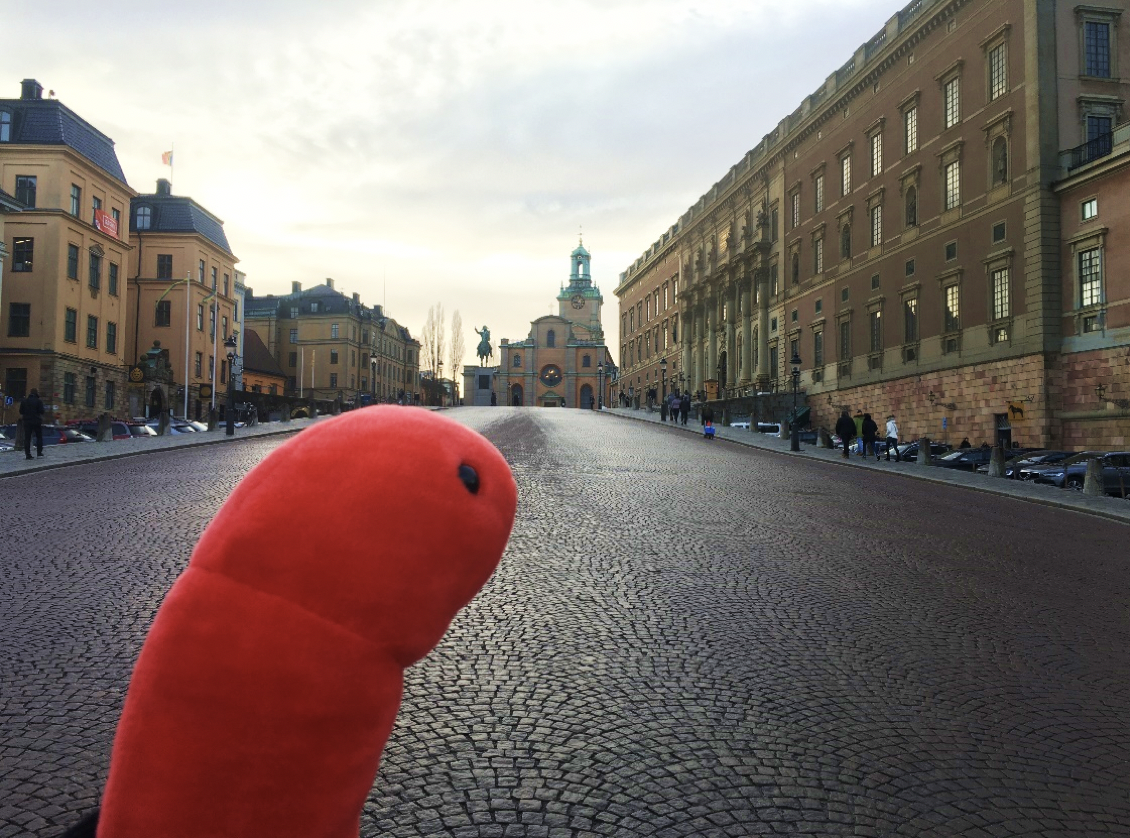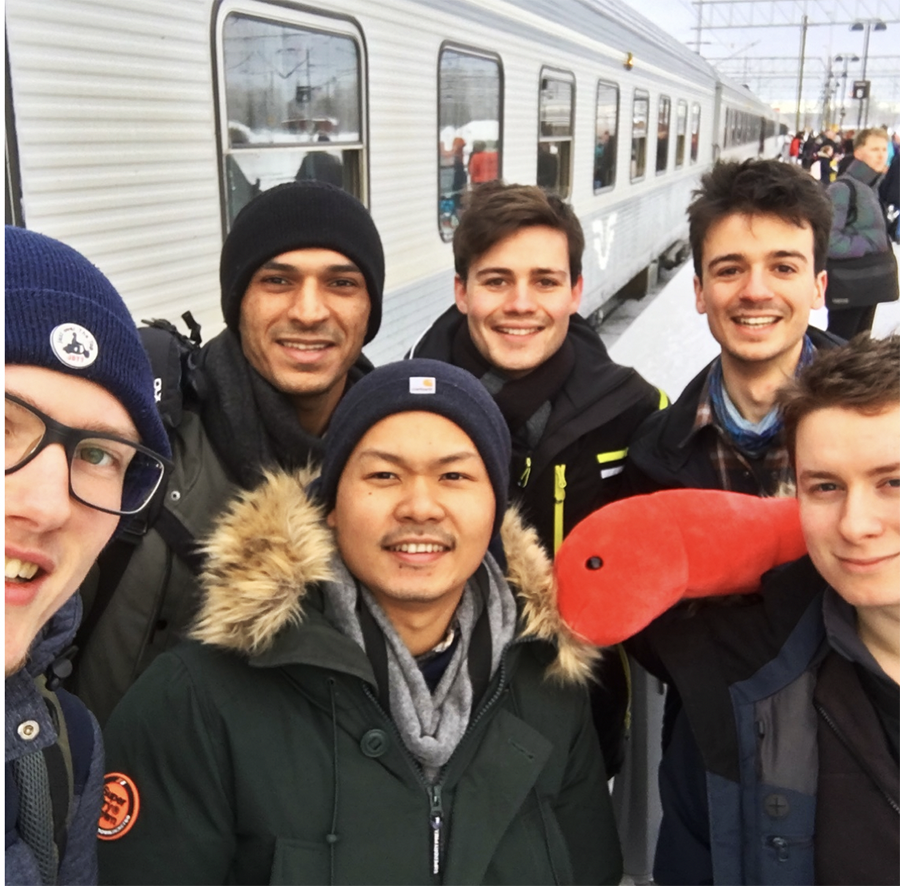Cranfield and Exeter’s journey to Esrange Space Center in Sweden for the BAMMsat project
28/02/2020

Header image: A beautiful aurora for our last day at Esrange.
We are a team BoB (BAMMsat-on-BEXUS). Thanks to the REXUS/BEXUS programme, we will be launching a version of Cranfield bioCubeSat programme called BAMMsat. Thanks to the REXUS/BEXUS student program, organised by a bilateral agreement between the Swedish National Space Agency (SNSA) and the German Aerospace Center (DLR) we can fly our hardware on a high-altitude balloon this October at Esrange Space centre in Sweden. This is a continuation of our last blog on the selection of the project at ESTEC, the technical centre of the European Space Agency (ESA) in the Netherlands. https://blogs.cranfield.ac.uk/aerospace/cranfield-and-exeters-journey-to-the-european-space-technology-centre-estec
A quick recap about BAMMsat-on-BEXUS.
Our objective is to increase access to space for biology researchers by providing a cheap and reliable platform to perform biological experiments in space. Researchers could run experiments on complex life forms such as C. elegans worms or human cells culture for example. Currently, with BAMMsat-on-BEXUS, we are aiming to perform a technology and operation demonstration of a CubeSat to show to the science community the possibilities of such a platform.
After the selection at ESTEC, the next phase of the project was the Preliminary Design Review (PDR) that took place between the 10th and 14th of February at Esrange Space Centre in Sweden. Our preliminary design was reviewed by a panel of experts. We also had a full week of training alongside other teams of students from all over Europe. For the review, we looked in more detail about the technical and financial feasibility of the project. We have looked at the compatibility of our technology and our launch vehicle: the BEXUS30.
Because of our biological payload (living organisms) we have a lot of pre-flight operational requirements and constraint. Due to that, we have to carefully plan our launch campaign operations i.e., before the launch, the shipment, the growth of the worms, the implementation and the wait time before launch. This can be quite complicated and difficult to manage especially when the biological samples need to be kept a specific temperature.
We came back from Esrange with excellent feedback and precious help to boost the design for the next phase of the program. Honestly, this program is excellent! If you have the opportunity to participate in that program, DO IT! They expect us to develop high-quality experiments, we get to meet executives from different space agencies and space-related companies, we get to launch in an actual European Ground-based Station. This is just an exceptional opportunity for students all over Europe to gain incredible experience and insight into space mission development and operations.
It is an astonishing amount of work, especially for a small team of seven like us. Still, the experience is gratifying, and we are preparing now for the Critical Design Review (CDR) this May at ESTEC in the Netherland again. After CDR, the design will be fixed, and we will start assembling and meticulously testing our system.
A quick resume of the fun part: Esrange Space centre is beyond the Arctic Circle in Sweden, and it is beautiful! We have seen Aurora Borealis, learned how to do an Arctic tea party, skied at night around the balloon launch pad of the station, raced reindeers and enjoyed the food of the great canteen before relaxing in the sauna of the hotel. We told you, if you have the opportunity to participate in the REXUS/BEXUS program, don’t think twice.



You can follow our adventures on Instagram https://www.instagram.com/bammsat_on_bexus/?hl=en and twitter https://twitter.com/bob_ze_wormnaut. If you want more information you can visit our website bammsat.com and contact us.
Thanks to the sponsors of this program:
REXUS/BEXUS student program, DLR, SNSA, ESA, SSC, ZRAM and MORABA
The UK Space agency who are currently looking into helping us financially.
Cranfield University with Professor David Cullen and the University of Exeter with Dr Tim Etheridge for funding and supporting us.
BoB team: Aqeel Shamsul, Giovanni Sinclair, Adrien Bolliand, Mike Cook, Amin Chabi, Mateusz Zalasiewicz, Miguel Martinez De Bujo.
Categories & Tags:
Leave a comment on this post:
You might also like…
Automotive Engineering: From student to hypercar innovation at Rimac
We sat down with recent graduate Thomas Perrin, to discuss how his year on the MSc in Automotive Engineering at Cranfield University propelled him from the lecture hall directly into the ...
What this year at Cranfield really meant to me
Every Cranfield journey is unique. In this alumni reflection, Zachea Scicluna shares what her year at Cranfield truly meant, from facing uncertainty to gaining hands-on experience in industry-backed projects. I’ve been reflecting (and delaying) ...
Preparing for assignments and exams?
Sorry! We know it seems a bit mean to mention the exams in January rather than looking forward to the break before it! However, we know many of you will be thinking about your forthcoming ...
Screening for FTSE 100 companies on Bloomberg
So you’re researching an index and need some data on its constituent companies? Bloomberg’s Equity Screening tool makes light work of this, not just for the FTSE, but for indices, exchanges and sectors worldwide. Type EQS ...
Accelerating my future: How Cranfield put me on the fast track to automotive safety innovation
Hello! I’m Michaela Kaiser, and I’m thrilled to share my journey studying abroad. I’m from Calgary, Canada, and I recently graduated from Cranfield’s MSc Automotive Engineering course. My path to Cranfield ...
From Myanmar to Cranfield: My path to Renewable Energy
As someone who is passionate about sustainability, my career goal is to build a path in the renewable energy sector. My aspirations comes from the benefits of developing sustainable energy sources and ensuring energy ...






